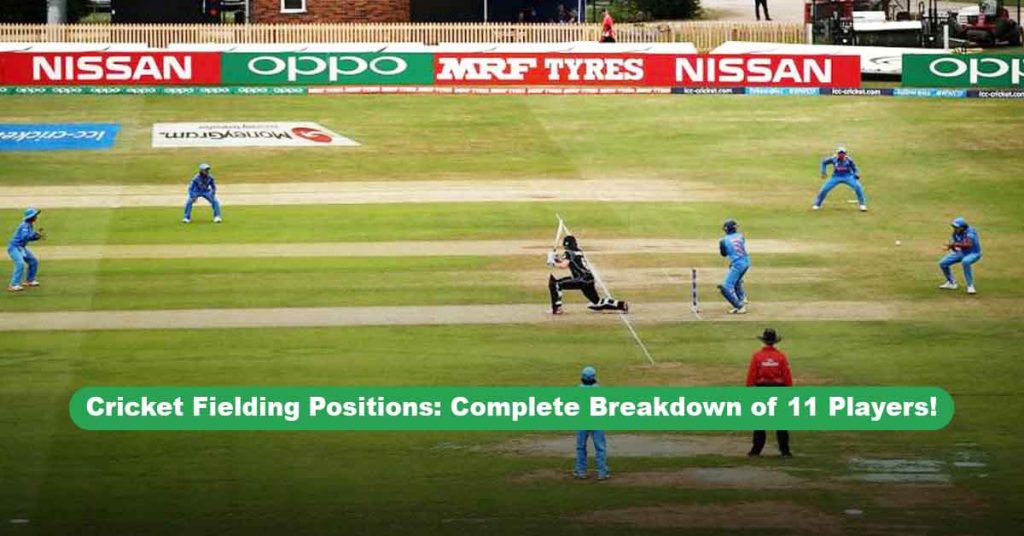Fielding in modern cricket is both strategic and physically demanding. With innovations over the years, gone are the days of conventional fielding setups, allowing batsmen easy run-scoring opportunities. Today’s cricketers train meticulously to excel at specific cricket fielding positions, where reaction times, speed, and spatial awareness play crucial roles.
Here is a comprehensive list of the main fielding positions in cricket, from the wicketkeeper to positions like mid-wicket and fine leg, along with advanced and modified positions used by captains to outwit the opposition.
Basic Fielding Positions
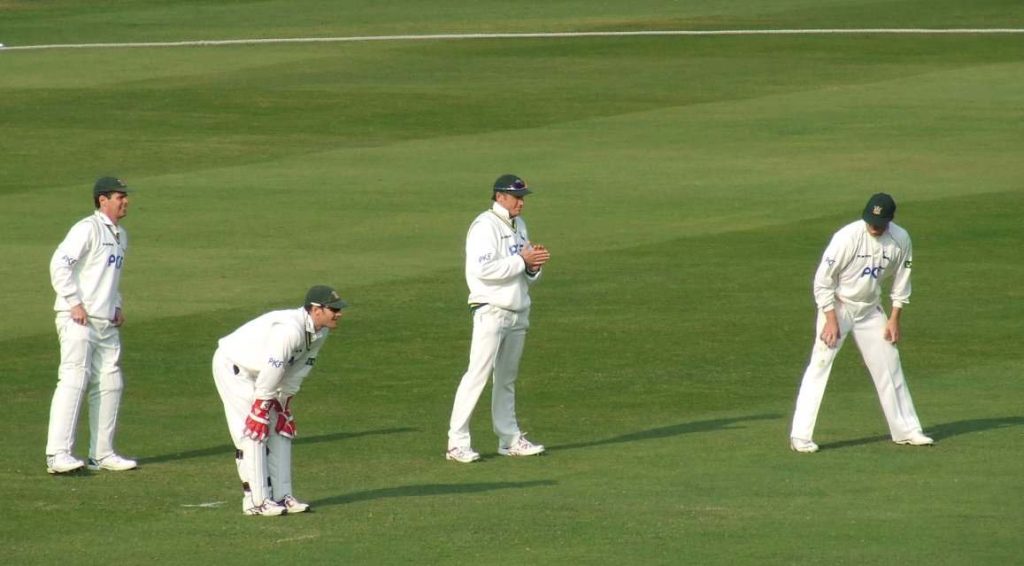
- Wicketkeeper
- Point
- Mid-Wicket
- Third Man
- Cover
- Square Leg
- Slips
- Mid-Off
- Fine Leg
- Gully
- Mid-On
- Short Leg (Bat Pad)
Advanced or Modified Fielding Positions
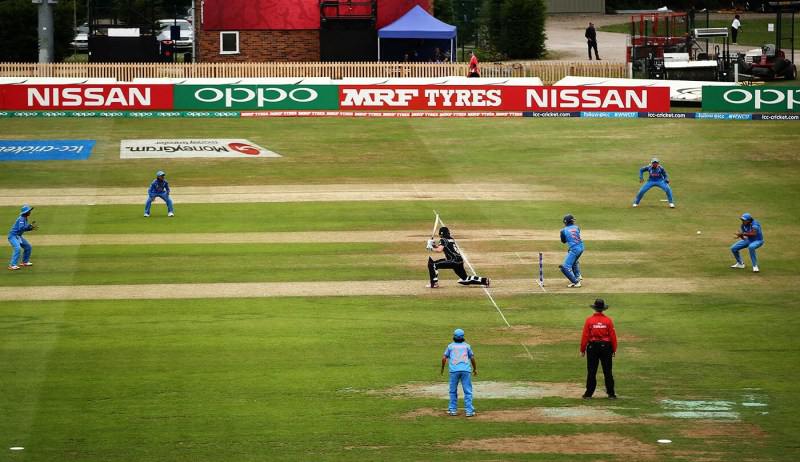
These positions reflect more strategic arrangements:
- Short Third Man
- Deep Point
- Long-On
- Backward Square Leg
- Extra Cover
- Deep Extra Cover (Sweeper)
- Deep Mid-Wicket
- Deep Backward Square Leg
- Forward Short Leg
- Deep Cover (Sweeper)
- Deep Forward Square Leg
- Leg Slip
- Deep Backward Point
- Long-Off
- Deep Square Leg
- Short Fine Leg
How are Cricket Fielding Positions Named?
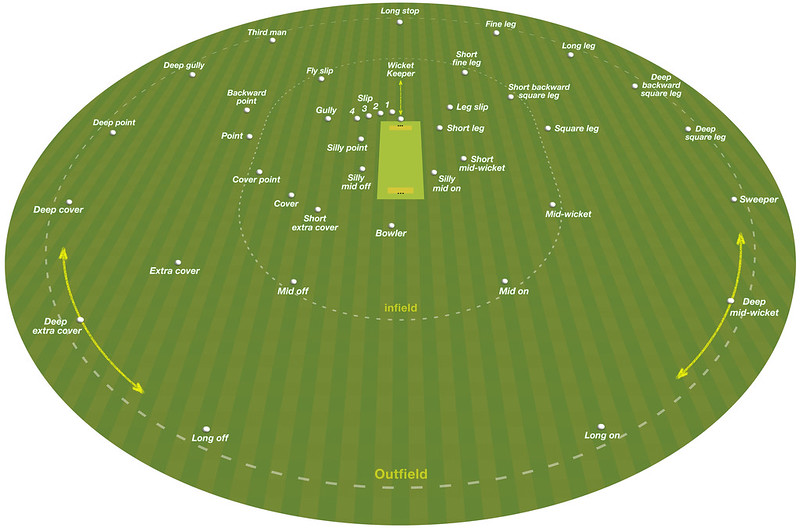
Fielding positions are named with respect to the batsman, often using polar coordinates. These positions are generally set for right-handed batsmen, as early cricket was dominated by right-handers. The field is divided into angles and distances relative to the batsman.
- Leg: Refers to the leg side of the batsman, also called the “On” side.
- Off: The opposite of the leg side.
- Mid: A position between the batsman and the boundary.
- Long/Deep: Far from the batsman and closer to the boundary.
- Short: Closer to the batsman but not as close as “silly.”
- Silly: Extremely close to the batsman, often for catching.
Fielding angles are also categorized:
- Fine: Nearer to the line running down the middle of the pitch.
- Square: Perpendicular to the batsman, usually on the off-side.
- Backward: Behind the batsman, usually on the leg side.
- Forward: In front of the batsman, typically on the off-side.
- Wide: Farther from the line of the stumps.
Fielding Positions in Detail
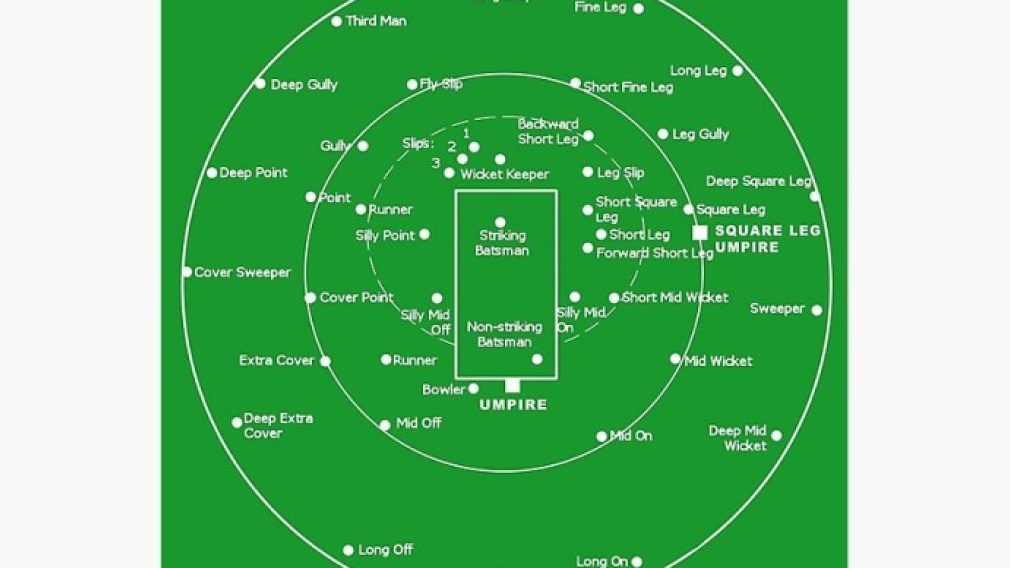
Wicketkeeper
The wicketkeeper, positioned behind the stumps, is a specialist fielder who performs stumpings and catches. Standing closer for spinners and farther back for pacers, wicketkeepers need excellent hand-eye coordination and agility. Legends include MS Dhoni, Adam Gilchrist, and Kumar Sangakkara.
Slips
Placed diagonally on the off-side, slip fielders anticipate edges from the batsman. There are usually multiple slips, depending on the bowler and situation. The leg slip is used less frequently, often for spinners. Notable slip fielders include Ricky Ponting, Ajinkya Rahane, and Mahela Jayawardene.
Third Man
Located at the boundary behind the slips, the third man is essential in white-ball cricket to intercept cut shots and edges. The position helps prevent boundaries and also supports the slip cordon.
Gully
Standing between slips and point, the gully fielder guards against thick edges from batsmen. The position is vital for catching and often sees some of the most athletic players stationed here.
Point
A point fielder is positioned square on the off-side to stop cut shots. A backward point, placed slightly behind the standard point, is used to catch balls hit square or behind the wicket.
Cover
Cover fielders stand between point and mid-off. This position is crucial for preventing cover drives and off-side singles. Extra cover is positioned further towards the boundary, often used during powerplays to guard the wider off-side.
Mid-Off and Mid-On
These are essential positions near the bowler, with mid-off on the off-side and mid-on on the leg side. They are responsible for stopping straight drives and preventing runs down the ground. Captains often field here to communicate directly with bowlers.
Mid-Wicket
Positioned on the leg side, this fielder intercepts pull and flick shots. A mid-wicket fielder must be quick and have good anticipation to stop runs and cut off boundaries.
Square Leg
Standing perpendicular to the batsman on the leg side, square leg fielders guard against sweep and pull shots. This position is crucial for saving singles and preventing boundaries.
Fine Leg
A fine leg is positioned behind the square leg, closer to the boundary, to stop glances and sweep shots. It is commonly used to cut off runs from deflected leg-side shots.
Short Leg (Bat Pad)
Placed very close to the batsman on the leg side, the short leg fielder aims to catch mishits, especially from spin bowlers. This is a risky position requiring protective gear.
Cricket Fielding Positions: Evolving Over the Years
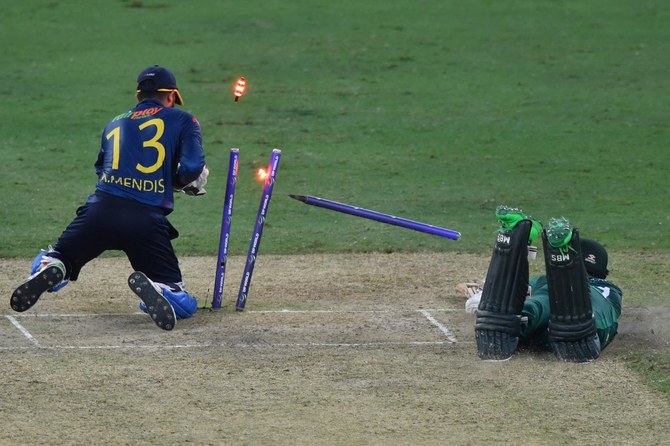
Extra Cover
A modern position between point and cover, extra cover provides additional protection in the off-side during powerplays. If stationed further back, the position is referred to as deep extra cover or sweeper.
Deep Mid-Wicket
Popularized by players like Ravindra Jadeja, this position is located further back from mid-wicket to intercept lofted shots. Ben Stokes’ famous catch against South Africa in the 2019 World Cup is an example of excellence in this position.
Short Third Man
Introduced in recent times, short third man is positioned behind the wicketkeeper near the boundary. This fielder intercepts deflected shots, scoops, and edges, often covering large distances quickly.
Deep Extra Cover (Sweeper)
A deep extra cover is positioned on the boundary between deep cover and long-off. This fielder prevents lofted drives and powerful square cuts, needing speed and a strong throwing arm.
Short Fine Leg
Positioned close behind the batsman’s leg side, short fine leg prevents sweep shots and leg glances from reaching the boundary. This position is essential in both one-day and T20 cricket for saving crucial runs.
Conclusion
Cricket fielding positions have evolved significantly with the demands of modern cricket. These positions, from close-infielders like slips and gully to boundary riders like deep extra cover, play pivotal roles in fielding strategies, helping teams counter the ever-growing batting prowess seen today.

